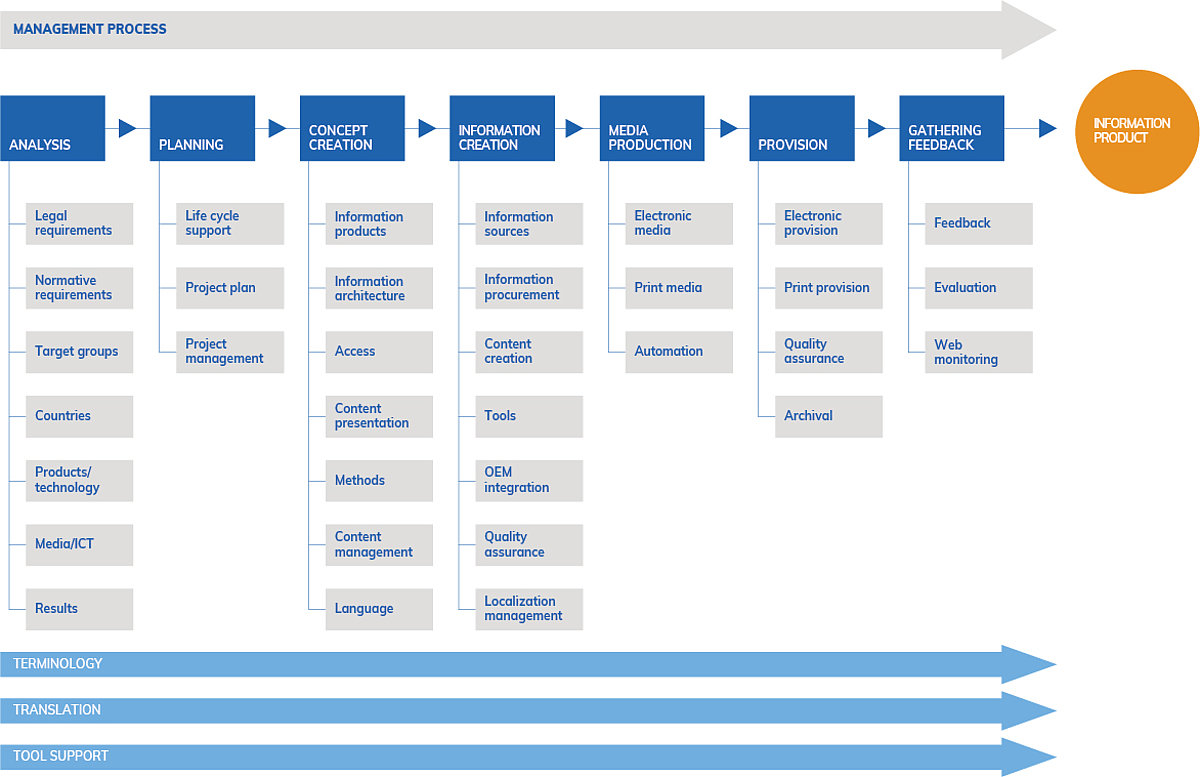
Making sense of complex matters
Technical products, software and services are not self-explanatory. The specialists in our field ensure everybody gets the most out of them.
What is Technical Communication?
Technical communication is the process of defining, creating and delivering information products for the safe, efficient and effective use of products (technical systems, software, services).
Communication about Products
Ever since humans started producing things, they have communicated with each other about the fruit of their work. They talk with each other to
- share their ideas with others before they create the product,
- show the finished products to others,
- explain what their products are good for and how they can be used,
- warn them about misuse of the product to prevent damage or personal injuries,
- train others how to use the products in the intended way, or
- offer their products for sale.

Information Products
Whenever such information cannot be delivered in a direct personal conversation, written, visual or other forms of non-personal communication can be substituted. Many great examples of such product-related information existed even long ago in history, like drawings made by early humans that show how to use a certain tool, or Leonardo da Vinci’s wonderful drafts of innovative vehicles.
Even now, complex technical products usually cannot be used safely, efficiently and effectively without additional information for use. In practice, information for use is either integrated in the product, delivered with the product or published somewhere else, e.g. on the internet. The state of the art and most preferable way of information delivery is the use of electronic media, on a suitable device. However, printed material is still very common if required either by the users or for legal reasons.
In technical communication, objects that contain and display abstract information are often called "information products". Such information products are delivered at the main phases of the product lifecycle, which constitutes the information lifecycle of the product.
In the same sense in which we talk about product development, the process by which information products are created is often called "information development" or, using the more widespread terms, "technical documentation" or "technical communication".

Developing Information Products
The typical tasks that must be performed to create information products can be visualized in a generic taxonomy. The one shown here was developed by a tekom task force during the 2014 relaunch of tekom’s professional certification program. This taxonomy does not describe a real process. In practice, processes may focus on different tasks in different depths, process steps may overlap, some steps may be repeated, and some may even be left out.
This taxonomy distinguishes among
- the core process in seven steps, with three to seven sub-steps,
- several support and parallel processes, and
- the management process.
It can be used as a basis for
- modeling process descriptions,
- defining sectoral skill sets and specializations,
- developing educational, training and certification programs for technical communication, and
- clustering all kinds of activities related with technical communication.
It is also very likely applicable to many other information or content creation processes.
Technical Communicators
To run the core, support, parallel and management processes in which information products are created, experts with quite a number of different skills and competencies are needed. These experts are usually called "technical communicators". In the software industry, the designation "technical writer" is widely used. The European Association for Technical Communication – tekom Europe is the largest professional organization for technical communicators worldwide.
